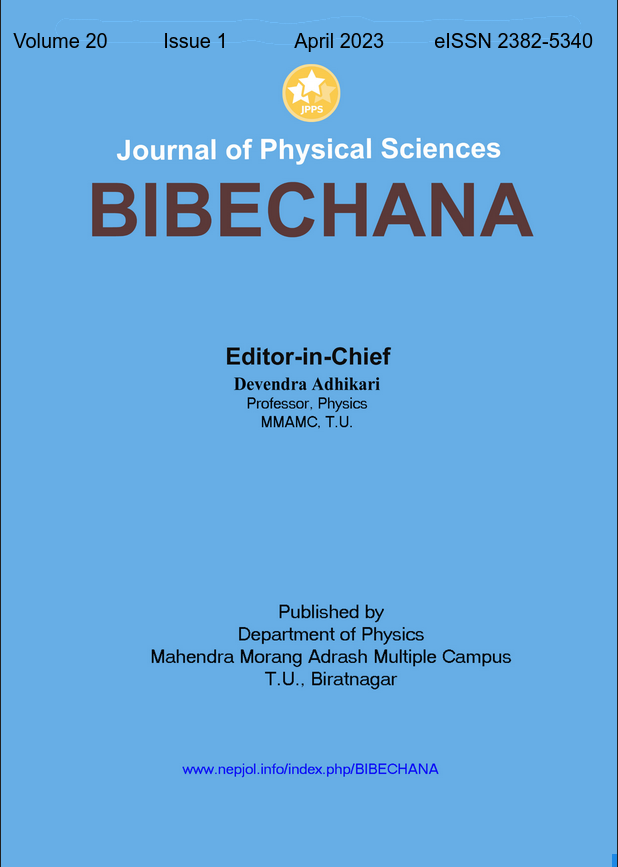A brief review on preparation and application of MWCNT-based polymer nanocomposites
DOI:
https://doi.org/10.3126/bibechana.v20i1.53724Keywords:
Multiwalled carbon nanotubes (MWCNT), Polymer composites, Conductivity, Mechanical strength, Antibacterial propertiesAbstract
Technological advancementalways seeks new materials with improved functional properties, particularly for smart applications. In this regard, nanotechnology is offering today wide range of novel material designs fabricated by compounding nanofillers into the polymer matrix. Different allotropic forms of carbon can reinforce the properties of polymers for various applications. Reinforcement depends on the dimension, shape, size and compatibility of the nanofiller with the polymer matrix. Chemical modification of filler surfaces and the matrix can selectively localize the filler in the hybrid composites in the desired phase or at the interface by melt mixing or solution casting method, during compounding procedure. In this regard, the conducting nature of the additioin of multiwalled carbon nanotubes (MWCNTs) into a polymer matrix fosters the conductivity into the materials. Such nanocomposites can be used for numerous applications such as conducting materials, super-capacitors, light emitting devices, medical purposes etc,. This review paper focuses on different methods of preparation of MWCNT/polymer nanocomposites, their surface properties, and microbial properties etc,.
Downloads
Downloads
Published
How to Cite
Issue
Section
License
Copyright (c) 2023 Jyoti Giri, Rameshwar Adhikari

This work is licensed under a Creative Commons Attribution-NonCommercial 4.0 International License.
This license enables reusers to distribute, remix, adapt, and build upon the material in any medium or format for noncommercial purposes only, and only so long as attribution is given to the creator.




